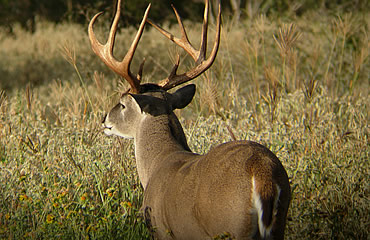Anything that brings more deer into less space increases your odds of success.
Last week’s tip about fences was an example of the funnel effect, where a natural or man-made feature concentrates deer travel. But there are many types of funnels and bottlenecks that give you a better chance of seeing deer.
When studying aerial photos or scouting, look for bottlenecks. A bottleneck acts like a funnel and is a natural or man-made contour that the deer like to follow. A good example is a point of woods that extends into an open field. Whitetails like to stay in the cover as much as possible, so they’ll stick to the woods where it narrows down – and that is a perfect place for a deer stand.
Look for small, narrow strips connecting woodlots. Wooded creek bottoms that cut through the open are sure bets, too. Whitetails use those places to move undetected, and you’ll usually find trails associated with that movement. You can find bottlenecks with aerial photos and by physically scouting.
Nothing beats sitting in a good stand and watching how deer move through a bottleneck.
Read Recent Tip of the Week:
• Fences Concentrate Deer Trails: Use these obstacles to your advantage when selecting stand sites.




.png)